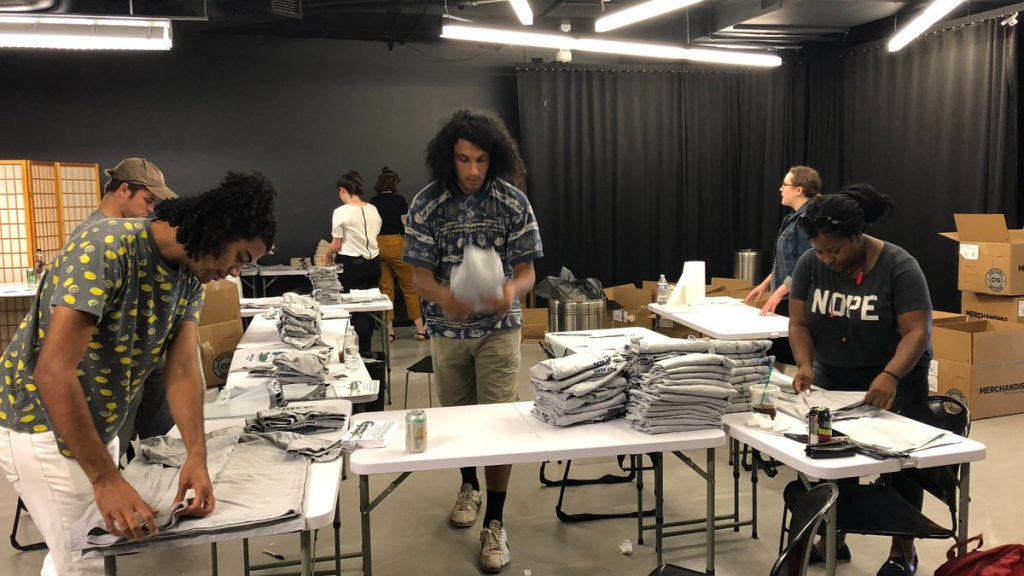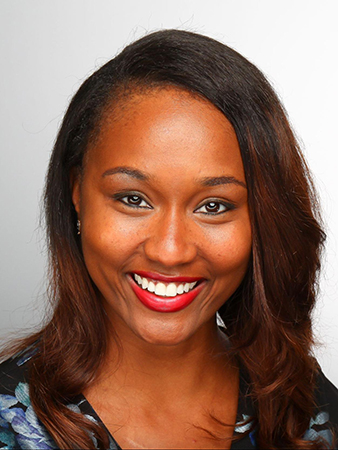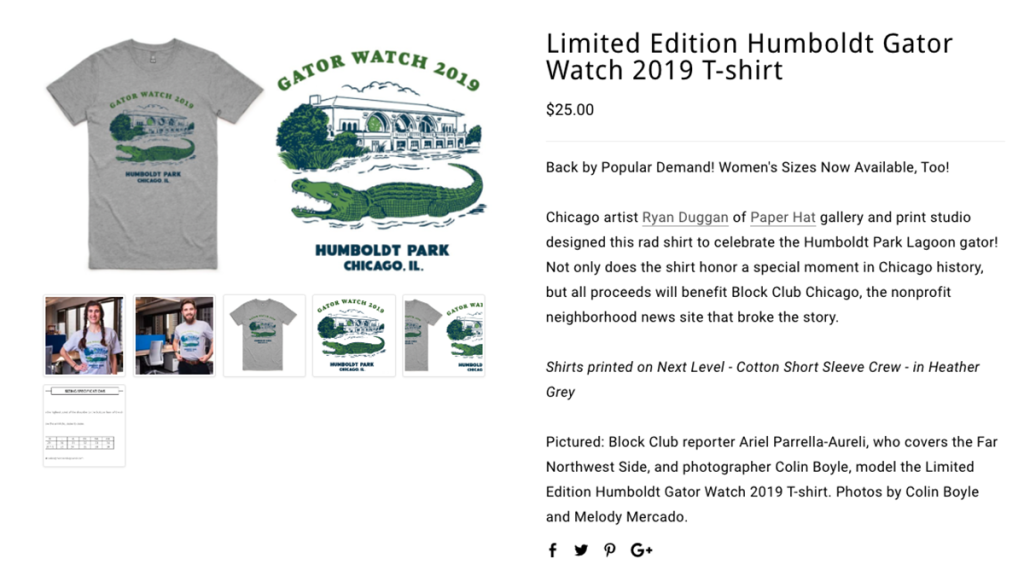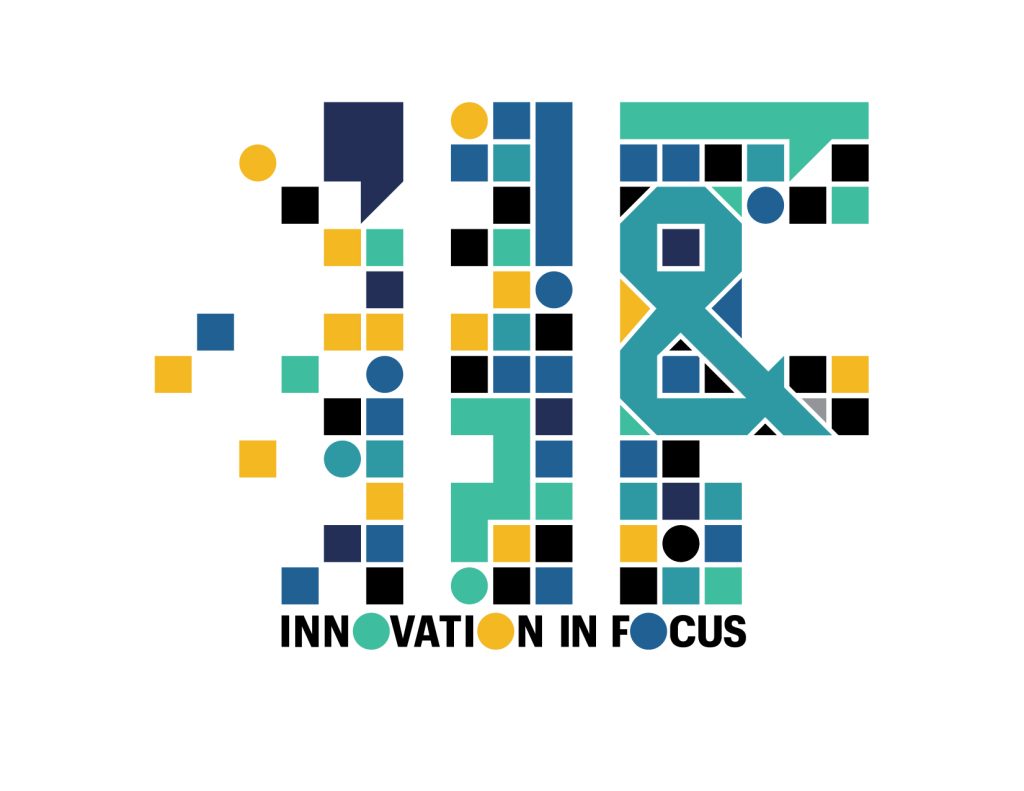
Block Club Chicago staff pack T-shirts during the sale of their first Gator Watch shirts in 2019.
Generating revenue through merchandise community partnerships
Block Club Chicago brought in $100,000 from Gator Watch, a conversation on merch and partnerships with Maple Walker Lloyd
Since Block Club Chicago’s founding more than five years ago, Maple Walker Lloyd has been focused on all things revenue — from advertising to grants to merchandise. Now with a team working under her as the senior director of development, Walker Lloyd has helped find creative revenue streams for this nonprofit newsroom, including involving local artists in producing quirky and Chicago-specific T-Shirts.
Block Club Chicago has developed not only a solid revenue stream but a distinct personality through their shirts and merch. Walker Lloyd spoke with the Innovation in Focus team to share insights for newsrooms looking to create a merch line that is rooted in their community.

Lytle: Can you tell me the story of how your merch line got started. Did it start with the alligator in Chicago?
Walker Lloyd: Back in 2019, one of our reporters actually got a tip that there was a gator in one of the lagoons here in Chicago. Now, if you know anything about the Midwest, you know that gators are not native to the Midwest. So after receiving this tip, our reporter said, “okay, let me go check this out.” Sure enough, she checked it out and there was a gator in this lagoon. Somebody had literally dumped the gator. Maybe they had it as a pet or whatever. Block Club actually broke this story. People were just flocking to the story like there’s a gator in a Chicago lagoon … this is nuts! So, one of our co-founders actually came up with the idea to create a T-shirt. She knew a local artist, Ryan Duggan, so she reached out to him to see if he could create a mock-up of this shirt. He sent a mock-up and was able to turn this around the same day. By 4 p.m. that day, Block Club was pre-selling T-shirts.

Lytle: Can you talk a little more about working with a local printer?
Walker Lloyd: We reached out to a local printing company that we had worked with in the past, a South Side printing company called Culture Studio. In order to get the best deal, you have to order your T-shirts in bulk. So the more T-shirts you order, the cheaper each T-shirt would be. I think we did two bulk orders: We did 3,000 in one order, and the shirts were $6.30. Then we did another bulk order of 500 shirts, and that was $7.38. So, I always tell people, the price varies, and it’s dependent on several things: the quality, the availability, and then the number of shirts that you want to order. You also have to think about what the drawing will look like on different colored shirts, and that could add to the cost of production.
Because we had an established relationship with our printing company, they were able to rush our shirts order. And we always tell people to do pre-sale. You’re not ordering like 3,000 T-shirts hoping that you’ll sell them, you’re just doing it based on how many orders come in. But you have to be upfront with the time because sometimes when you do pre-sale, it might take two to three weeks before you can even ship these shirts or send them to print.
Lytle: And then what did distribution look like?
The entire @BlockClubCHI team had a hand in making @blockclubchi's Gator Watch 🐊 + Plover merch drives successful.
— Stephanie Lulay (@slulay2) October 8, 2021
The viral stories wouldn't have happened w/o @mina_bloom_ + @JayDubWard.
And everyone helped stuff + ship packages: pic.twitter.com/y1any9ti4z
Walker Lloyd: We’re journalists, right? We’re not marketers, we don’t sell things. But we generated $100,000 from these T-shirt sales before taxes, and the key to that was because we did our own distribution. One of our co-founders, essentially his home was a distribution site. He would get these orders, pack them and then ship them off. Specifically for Gator Watch, it was all hands on deck. The reporters, everyone on staff, came together for one day, and nobody did any work besides pack and ship these orders.
We do understand that oftentimes newsrooms don’t have the bandwidth or the capacity to tackle all of this. And we didn’t either, but we needed the money. So we made it work. Especially with Gator Watch, it was trial and error, right? This was something that we were really willing to try and risk to see how it went. Because we took this risk, we realized that we could actually generate revenue from it – a good amount of revenue.
Lytle: What are some of the things that you’ve learned since that first Gator Watch shirt?
Walker Lloyd: That kind of branched out and allowed us to expand our merchandise, creativity and ideas and innovation. Two years ago, we partnered with another local artist to help us with our year-end subscription pushes. Since Chicago neighborhoods are super popular to Chicagoans, everyone is so proud of the neighborhood that they live in, we found a local artist that creates neighborhood posters. The campaign is: If you purchase a subscription then you get a neighborhood print for free, and people flock to this. We had a year-end subscription goal for the past two years, and we’ve always been able to make that subscription goal because of these neighborhood prints.
Lytle: When it comes to promoting these shirts, what does that look like?
Walker Lloyd: Typically, we’ll do it in all of our newsletters, our socials – we have a massive social media audience – and we’ll put them at the bottom of stories, too, and actually do a story on what we’re promoting, as well. So we will check off every single box to promote our partnership.
Lytle: Do you have any advice for news orgs trying to kind of find their own voice when it comes to their merch?
Walker Lloyd: What is it that you’re doing right? Why do people support you? And see how you can monetize on that. Whether it’s a story, whether it’s something that you guys are doing in the community, why are people supporting you? Or, even take it a step further, and ask people what it would take for them to buy merchandise from you. If you don’t know, or you’re too worried about trying something, just ask your readers, and they’ll tell you. It’s very simple.
Lytle: How does this help accomplish revenue goals or other goals for your news org?
Walker Lloyd: So our subscription, or freemium model, is $59 a year or $6 a month. Some people simply can’t afford the $59 a year, but they want to support your newsroom, and merchandise offers a low cost way for people to support that. So it may be easy for somebody to pay $10 or $15 for a hat or $25 for a shirt, but they may not be able to afford that $59/year subscription. It just offers a low-cost option for people to still support your newsroom. Then, it also doubles down as a marketing campaign for other newsrooms, right, because this can now be duplicated. It’s also about helping our peers and, and other media outlets across the country.
Lytle: Is there any other advice that you would give to small teams or local news orgs that want to try this kind of local artist partnership for the first time?
Walker Lloyd: In looking for artists, really understand what kind of partnership you’re trying to establish. Similar to what you would do with philanthropic support or donations or grant applications, you want a mutually beneficial partnership. One of the things that we really gleaned from working with these local artists was that they were also passionate about local news. You don’t want to find someone who is just a good artist. But are they really passionate about the work that you do? Are they really inspired by the work that you do? It’s important to think through the partnerships that you want to establish when it comes to merchandise.
Lytle: It seems like trying something such as partnering with a local artist on one T-Shirt campaign can open up so many more opportunities for revenue and community support.
Walker Lloyd: I think about that often: Five years ago, if we never did Gator Watch, if we never did Piping Plovers, would we have known to partner with a local artist for our subscription or donation pushes? Maybe? It’s interesting to see how this has manifested into something far bigger to really help us to generate revenue.
Editor’s Note: This interview has been edited for clarity and brevity.

Sign up for the Innovation in Focus Newsletter to get our articles, tips, guides and more in your inbox each month!
Cite this article
Lytle, Emily (2024, February 19). Innovation in Focus: Generating revenue through merchandise community partnerships. Reynolds Journalism Institute. Retrieved from: https://rjionline.org/news/generating-revenue-through-merchandise-community-partnerships/
